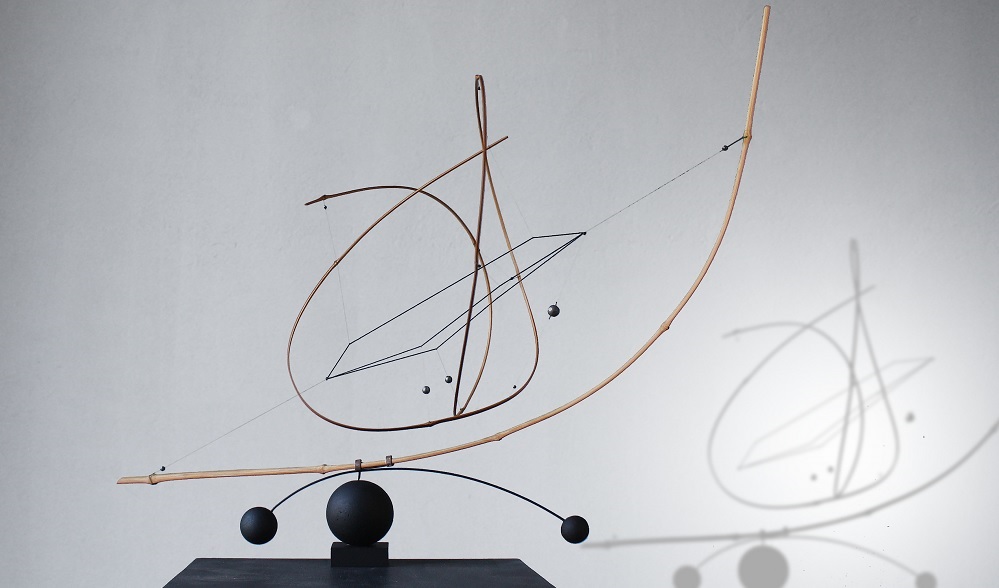Reviews & Articles
Review Crossing the Void at 10 Chancery Lane Gallery
Jonathan THOMSON
at 2:32pm on 23rd February 2021

Caption:
Laurent Martin, Space Ship
(原文以英文發表,評論「穿越虛空」展覽。)
Laurent Martin was born in France in 1955, studied Visual Art at Ecole National Supérieure des Arts Décoratifs in Paris from 1985 to1988 and worked as a creative director in advertising and fashion. In 1998 he fell in love with bamboo and began his research into its infinite resources. In his travels he developed a deep insight into the spiritual and physical properties of bamboo and its potential as a vehicle for spatial expression. Along the way he adopted the nickname “Lo”.
In his work Lo seeks balance and harmony through movement and stillness, tension and flexibility, presence and absence, light and shadow. Most of his works are designed to move. As mobiles they inevitably draw comparisons with Alexander Calder, but given that Calder trained as an engineer and worked mainly in steel, there is something of a mathematical order to his work’s constantly changing equilibrium, whereas Lo’s work has a lighter, airier, more fluid character.
In Hong Kong we encounter the strength, robustness and rigidity of bamboo on a daily basis when we see it used in construction as scaffolding, or on a more seasonal basis when it is used for entire structures, such as the stages and enclosures for community performances of Cantonese Opera. In his work Lo prefers to explore the more ethereal qualities of very thin wands of bamboo. This gives rise to works such as Smoke which comprises a large ceramic ball some 25 centimetres in diameter suspended from the ceiling, around which wraith-like tendrils of bamboo writhe and turn, rising and falling, emanating from the rotation of a more dense band of bamboo at the bottom and spiraling up towards dissipation.
His work Spaceship is also aptly named. This is a tabletop piece in which all of the elements are in a fragile equilibrium while balanced on top of a ceramic ball. In this work the bamboo elements (which are held in check by a wire strung from a bow), are counterbalanced by a tightrope-walker’s balance bar with balls on the ends. The physical relationship between base, balls and bow alludes to the materiality of a spaceship, while the thin wands of bamboo and the delicate yet strong wires that hold them in position seem to represent the folding of time and space as the vessel goes into warp drive or enters a wormhole - both theoretical constructs familiar to all fans of “Star Trek” and it’s ilk.
The work Crossing the Void consists of a ring shape with a hoop oscillating back and forth and a wand rocking to and fro inside it. Two balls of ceramic hold the moving parts in balance while the ring is anchored to a metal base. When in motion this work alludes to an orrery, a mechanical model of the Solar System, much loved by the Nineteenth Century Victorians, that used clockwork and a complex array of brass cogs and levers to illustrate the relative motions of the planets and moons as they travelled around the sun.
The poetry of his forms is amply demonstrated in one of the simplest. Dancing for Love has just three elements: a single ceramic ball suspended by a wire from the ceiling, and two wands of bamboo, each of which is bent into two consecutive curves that twist and turn in synchrony around the axis described by the wire. The movement of his forms in space are allusive in themselves, but when seen in conjunction with the shadows that they cast onto an adjacent wall, also bring air and light into play. The effect is quite mesmerising.
|
|
|
|
|
|
